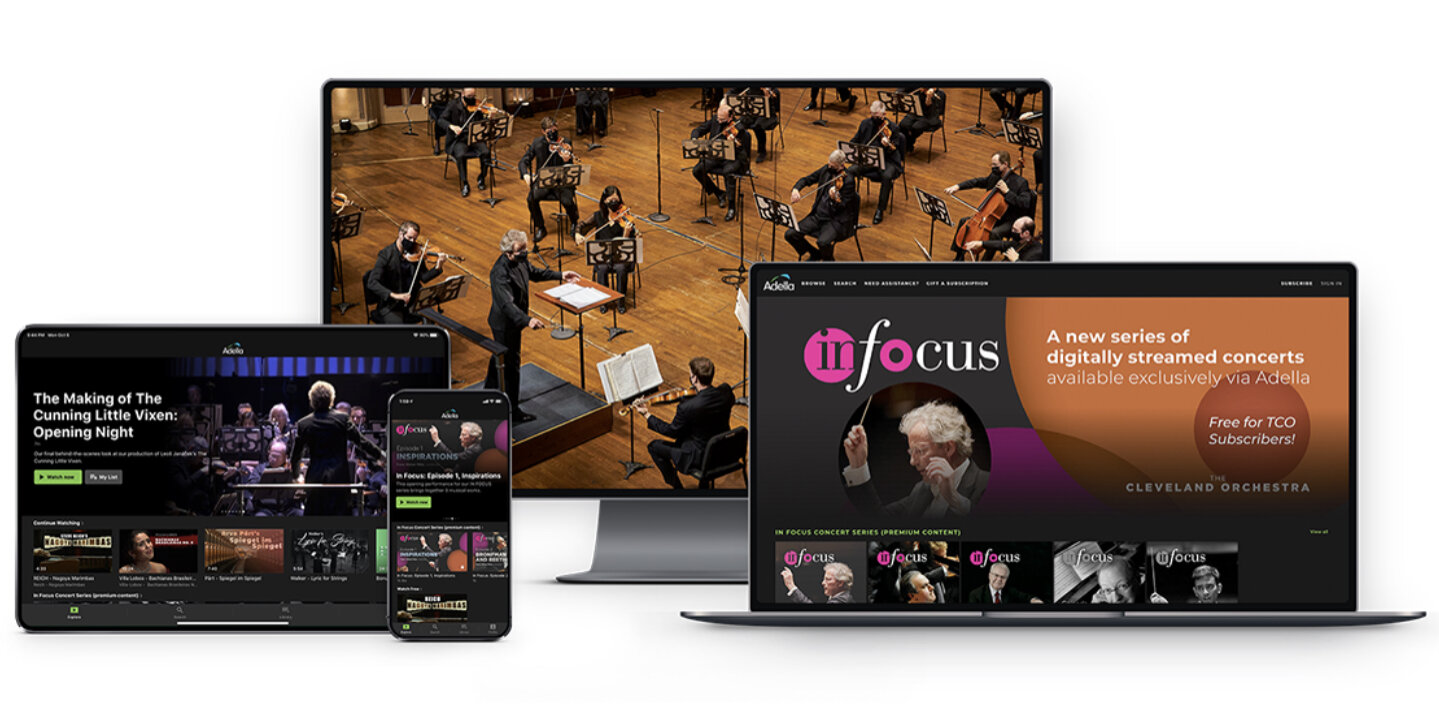Embarking on Digital Monetization
Since the beginning of the pandemic, ABA has profiled a number of arts organizations that have developed digital content which engages audiences on an emotional level. But as it has become increasingly clear that digital is here to stay, progressive arts organizations have begun to turn inward: how can digital content be used not only to build audiences and keep patrons loyal, but also to bring in the necessary funding to ensure the organization can continue to function for the next year (and the next 5, 10, and 20 years)?
There are many considerations that go into monetizing an organization’s digital content. To help guide arts leaders through the decision making process, we’ve compiled this resource of questions to ask when embarking on the potential monetization of your institution’s digital content.
1. Is Generating Revenue the Goal of Our Digital Content Right Now?
There’s no right answer. In the current moment, arts organizations have an opportunity to capitalize on the widespread use of online platforms to bring in revenue while in-person offerings remain costly and challenging. On the other hand, offering content at no cost can help organizations stay connected with loyal patrons who may have contributed to emergency relief funding or are likely to give in the future. Free programming also removes barriers to access and can help bring in new audience members who are not yet ready to donate or purchase a ticket. That said, charging for content isn’t an all-or-nothing proposition. San Francisco Opera (see below) makes premieres free and ongoing content available to paid subscribers.
San Francisco Opera: Opera is On
Opera is ON is a digital hub of opera content, including streamed archival productions. These streams are free when they premiere, making them easy for anyone to enjoy. Members, subscribers, and donors have access to all past streams afterwards, delivering value to existing donor bases and creating motivation to become a subscriber
Your organization’s decision to or not to charge for digital content will be influenced by (1) knowledge of what your customers are willing to pay for and whether you can sustainably offer it, and (2) the extent to which your digital initiatives fulfill a central value proposition. Can you justify charging for the content you create, and if so, how does it respond to your customers’ ‘jobs to be done’ during the pandemic? If you are not charging, are you clear on your short- and long-term objectives, such as audience loyalty?
2. What Type of Return Do We Seek to Get From This Project (e.g., Earned or Contributed Revenue)?
If your organization is looking to generate revenue through your digital content in the short term, the nature of that return — earned or contributed — is a key consideration. To be sure, many organizations have successfully deployed hybrid monetization models, soliciting optional donations for some content and charging for other content. Content made specifically for the digital environment (think, ballet classes with artist instructors or a behind-the-scenes look at the organization) tends to be a good candidate for earned income. However, donation-based offerings can encourage audience members to take a step back and think about the value they associate with the art, and what they are capable of contributing in a given moment. One simple consideration: for any content, do you have a ‘support us’ button easily accessed? Just like you wouldn’t put on a performance without encouraging donations from those who are willing, you should do the same for online content.
BalletX: BalletX Beyond
This Philadelphia-based contemporary ballet company has launched its own streaming platform, on which it releases dynamic original dance films that can be accessed with a subscription. For as little as $15/month, viewers can enjoy world premiere short films, behind-the-scenes features, and more.
3. Do We Plan to Continue This Digital Initiative Beyond the Pandemic?
Another important question to consider is to what extent you see your digital initiative remaining a part of your organization in the long-term. Is digital - and monetization of digital - a priority for the current closure period only to connect with your audiences? Once reopened, would digital delivery at scale and of value be more of a distraction from your core mission? Or, will digital content become a permanent part of your strategy and offerings?
Most ABA members tell us they have seen this as the moment to make digital a core part of their offering in the long term. If so, there are a range of goals that can make content complementary to the live arts experience including:
Added value for subscribers: creating members-only digital content that enhances the experience of a live exhibit or performance can make subscription even more attractive.
Expanding your reach: creating innovative content for the digital space can be of great value to enthusiasts of your art form around the world, and can increase your wider recognition.
Increased accessibility: online content that parallels live offerings can help loyal audience members who are less able to visit in-person, or those who want to sample the experience before trying, to still remain part of your community.
4. Should We Take a “Live First” or “Digital First” Approach?
Generally there are two approaches to creating digital content: “live first” and “digital first.” In the “live first” approach, work that was created for in-person consumption is digitized and presented virtually. With “digital first,” work is created specifically for presentation online. Both come with a unique set of benefits, as well as challenges to consider.
Pros to “Live First”
This can be a fantastic way to build on existing buzz — audience members who missed the chance to see a past staged performance in-person can now have their chance.
It is also simpler to organize once you return to live performances at scale, as you only have one performance with two delivery mechanisms.
Cons to “Live First”
With this approach, it is harder to stand out, as many organizations are using archival footage to establish their online presence (and some free of charge).
There are also copyright and union restrictions to consider, which you need to keep in mind at the production stage.
Pros to “Digital First”
This approach allows for immense creativity, allowing organizations to stand out in a crowded digital field.
You can customize the content for the needs and “jobs” of a digital audience (which are likely different than those for live audiences).
It also makes clear the value of payment: if you are not watching this content digitally, you’re not watching it anywhere!
Cons to “Digital First
To ensure that the production is of high quality and without too many technical hiccups, much more investment is required, both of time and resources.
It also creates an almost new artform that may not translate into viewers wanting to experience your live offerings.
Likely you will end up with some combination of “live-first” and “digital first” offerings depending on your monetization strategy.
English National Ballet: BalletActive
The Ballet has created a subscription-based library of pre-recorded classes for all experience levels, including not only ballet offerings but also yoga, barre, and other dance forms. Classes are designed to enjoy at home.
5. Will We Do This Ourselves, or Should We Look for a Partner?
Making a commitment to digital content often requires significant investment to ensure that it is of high quality and that it reaches enough viewers to have a strong return. Arts leaders must seriously consider their organizations’ existing capabilities, and the resources needed to produce the type of impactful content they are aiming to create. Things to consider include:
Access to technology: does our organization have the technology required to produce the digital content we want to create?
Staff expertise: does our team have sufficient know-how in the technical and planning aspects of digital production?
Budget: will we be able to afford an investment in technology and staff if we need it?
Washington Ballet: Create in Place
In a partnership with Marquee TV, the Washington Ballet began to offer season subscribers access to Marquee TV’s complete catalogue, including the Ballet’s own content for streaming.
If the answers to the questions above are “no,” one option is to look towards outside experts for support. Working with a consultant or local digital production group can help you create high quality content without the need to build out these internal capabilities. Larger innovators in the field are emerging as well, like Cuseum, a company that provides the infrastructure to create digital experiences for virtual museum visitors.
An additional question is important to consider: do we have the ability to market effectively and find audiences for our content? If not, partnering with an aggregator that has its own platform and built-in audience can be a great way to increase your reach. Companies such as Medici.tv and Marquee TV have existing global subscriber bases, and can bring your digital content to arts lovers around the world.
Another path some arts organizations have taken is to work together to reduce the costs and increase the potential audience associated with investments in digital. This has taken the form of anything from a collaborative streaming service to a statewide opera alliance to secure joint funding.
There are, also, arts organizations who have decided to forge their own digital paths by developing their own streaming platforms. This requires frequent content updates, a technical platform that can adjust to different methods of viewing (e.g., TV, mobile, browser) and a differentiated product that audiences will seek out -- but the rewards are exclusively yours.
Cleveland Orchestra: Adella
The Orchestra has created their own streaming platform, Adella, which offers free content including intriguing samplings of the Orchestra’s artistry and history, plus a premium monthly membership that grants access to additional content, such as the new In Focus concert series.
Having a strong digital strategy in place is key to start thinking about monetization. ABA members can access tailored workshops to identify your digital objectives - contact your member advisor to find out more.
For non-members, explore our Digital Arts & Culture Center for more resources on how to make the most of your online presence.








